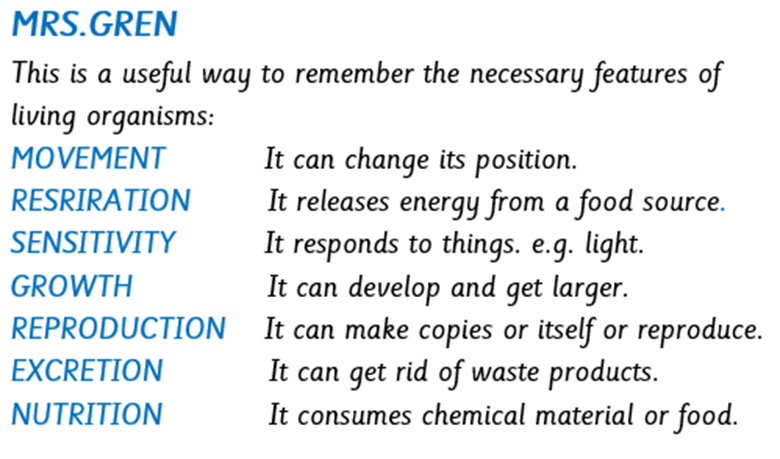Welcome to Autumn 2 in Red Kites
English
In our English lessons, we will be exploring two texts; FArTHER by Grahame Baker-Smith, a story of a young boy, bewitched by his father's unrelenting passion to fly, and Cinnamon, an Indian fable by Neil Gaiman.
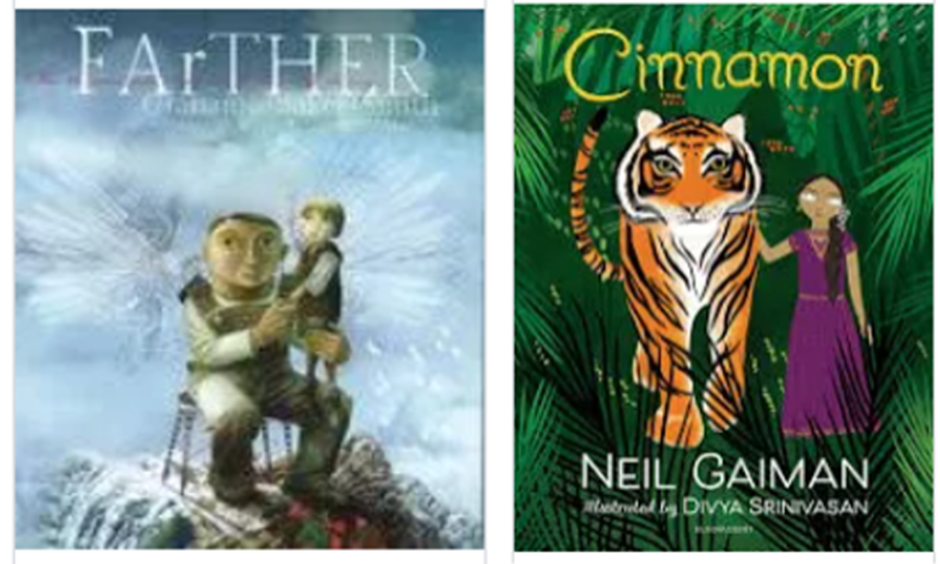
Pupils will be exploring the following writing genres:
FArTHER: Retelling stories, recounts (postcards), setting descriptions, diary entries, instructions and sequel stories.
Cinnamon: Informal letters, dialogue, advertisements, limerick poetry form, and fables.
Key grammar covered will be: conjunctions, modal verbs, noun phrases, imperative verbs, time adverbials, first person, paragraphing, similes, prepositions, direct speech. Some of these are explained below.
Conjunctions: These are parts of speech that connect words, phrases, clauses, or sentences
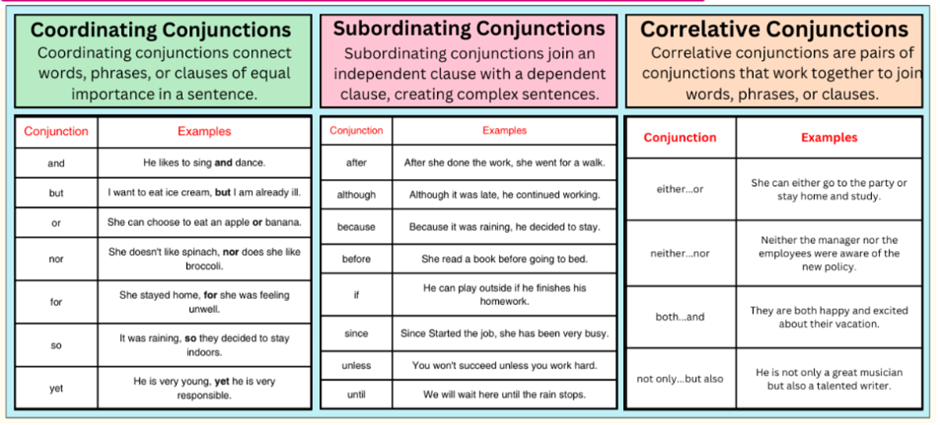
Modal Verbs: These verbs support other verbs in a sentence to indicate possibility or necessity. The most common modal verbs are; will, would, should, may, can, shall, ought to, must and might.
Noun Phrases:
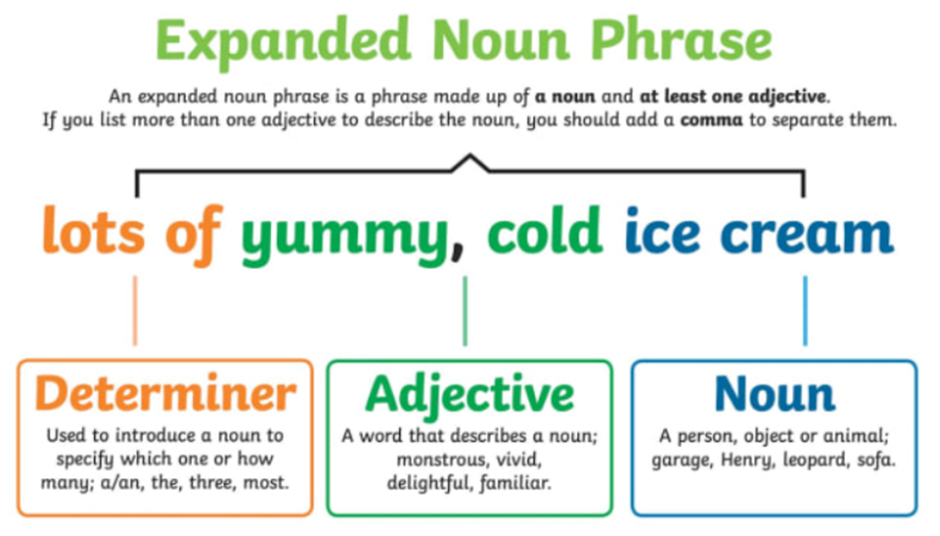
Imperative verbs: These are sometimes known as bossy verbs. They are verbs which tell you what to do. They are often seen at the beginning of a sentence and create a command. We will be using these in our instructional writing. e.g. put, cut, push, place, turn, twist, paste.
Paragraphing: This is a useful reminder of when to start a new paragraph in long pieces of writing;
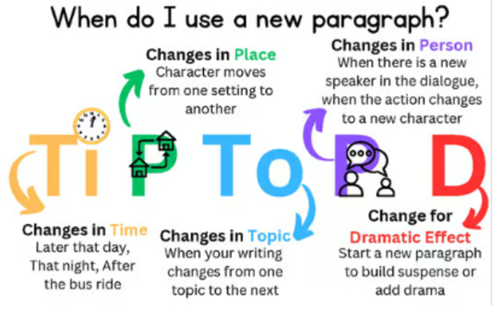
Prepositions: These are words that tell you where or when something is in relation to something else.
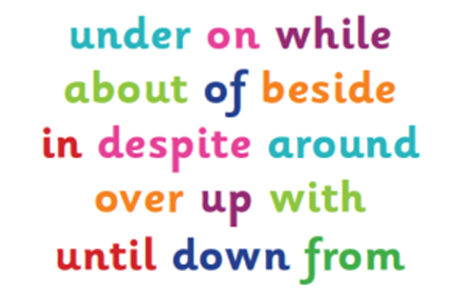
Direct speech: Direct speech is a sentence where the exact words spoken by somebody are recorded in inverted commas (also known as speech marks). Inverted commas are used to show which written words are spoken by the character and other punctuation is used to help the reader understand when each character starts and stops speaking. Usually, the spoken words are accompanied by a reporting clause which contains a speech verb and reveals the identity of the speaker.
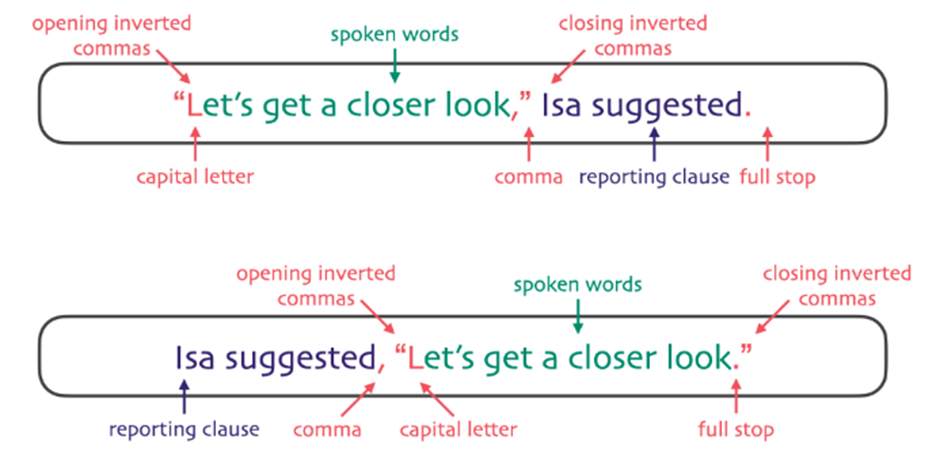
Spelling
This is taught three times a week and pupils are tested on Mondays. The spelling sheet for each half term can be found on Class Dojo.
Handwriting
This is taught three times per week. It is important that pupils form and place letters correctly and that they develop a cursive, fluent and legible handwriting style.
Mathematics
In our maths lessons, we will be focusing on area and multiplication and division. Pupils will make better progress in all areas of mathematics if they have fast recall of their timetables and related division facts.
Area: The term used to define the amount of space taken up by a 2D shape or surface. We measure area in square units: cm² or m². Area is calculated by multiplying the length of a shape by its width. We can count squares to find the area of a shape.
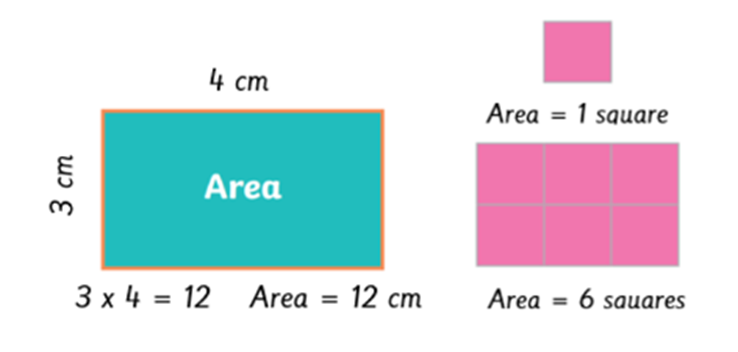
Multiplication and division: By the end of year 4, all pupils should be able to recall all multiplication facts up to 12 x 12 fluently with a 6 second re-call. Many other areas of mathematics will be easier once this knowledge is secure.
Division facts are the inverse of multiplication;
e.g. 3 x 4 = 12, 4 x 3 = 12, 1 2 ÷ 3 = 4, 12 ÷ 4 = 3
We encourage pupils to use timestables.co.uk or Mathsframe.co.uk to practise regularly, both in school and as part of their home-learning.
Ways to calculate multiplication and division:

Computing
Mrs King will be teaching Red Kites class for computing. The unit is all about audio editing. Pupils will be learning about and creating podcasts. These are a type of spoken word file that can be downloaded by listeners from the internet or radio. They are protected by copyright laws which means that the creator owns the rights to it. A user can often choose to download the whole series of podcasts. Some examples of podcasts are ‘Stories Podcast’, ‘Six Minutes’ and ‘Brains On! Kids Science Podcast.’
As ever, we will be discussing e-safety as part of our computing lessons.
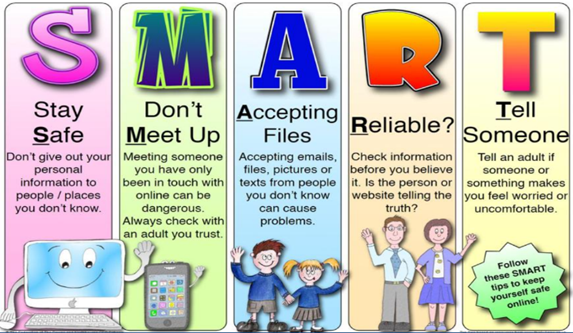
Drama
We will be using drama as a strategy to teach and embed across a range of subjects. This will include role-play, hot-seating, conscience ally, freeze framing, thought tracking, teacher in role, flashback and flash forward questioning.
D.T.
In D.T. we will be designing and making a cushion, including the use of appliqué. This is a sewing technique in which patches of fabric are sewn in place, often using decorative stitches. The earliest known example of appliqué was discovered in the tomb of Tutenkhamun, and dating back over 3,000 years!
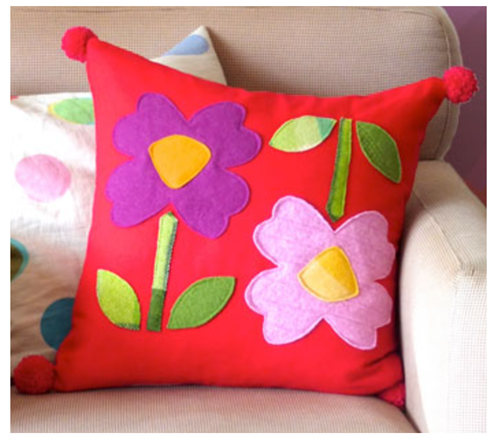
We will be revising and, hopefully, perfecting stitching styles used in year 2.

French
In our French lessons, we will be learning about Les Vêtements (clothes).
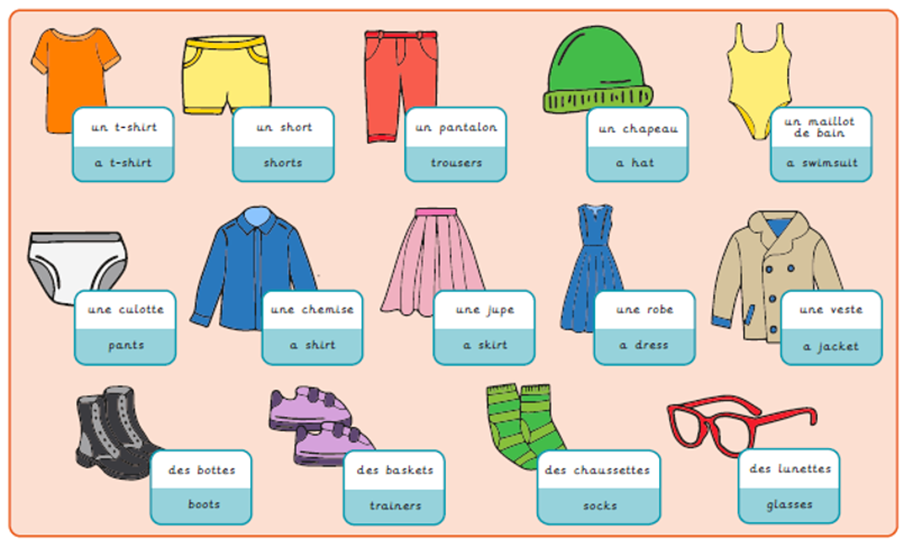
Geography
Our geography lessons are all about Mediterranean Europe. We will be learning about the climate, food and culture of Mediterranean countries like France, Spain, Italy, Turkey and Greece. During this unit, pupils will have the chance to try foods typical of the Mediterranean diet. They will also use their maths data handling skills in analysing climate data from a graph. We will be studying aspects of both physical and human geography.
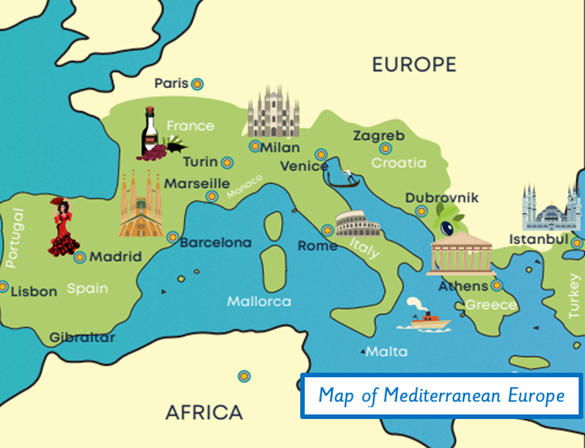
History
In history, we are learning about Ancient Greece. The Ancient Greeks lived in Greece and the countries we now call Bulgaria and Turkey over 4000 years ago. The two most important cities in Ancient Greece were Athens and Sparta.
Many of the things that we take for granted in our modern world originated in Ancient Greece. e.g. democracy, laws, modern mathematics, sculpture, philosophy, science, the Olympics and even medicine.
Ancient Greek myths are still read today. Monsters include Medusa and the Minotaur. Heroes include Odysseus and Perseus.
Greek architecture has influenced the design of buildings all over the world. The British Museum (London) is an example of this.
The Greek alphabet and language influenced us too. Our alphabet was developed using some of the alphabet that the Ancient Greeks used. In fact, the first two letters in the Greek alphabet were ‘alpha’ and ‘beta’, which is where we get the word ‘alphabet’ from!

Music
This lesson will be taught by Mrs King. In music this half-term, we are exploring feelings when we play. Sometimes, the music we hear highlights the words we are singing. There might be a special effect in the music on a particular song lyric to make that word stand out. Special effects in music can make the words we sing more meaningful. The sounds that we hear in music can also help to communicate specific moods.
We will be learning about:
- the treble clef staff and notation.

- C major key signature.
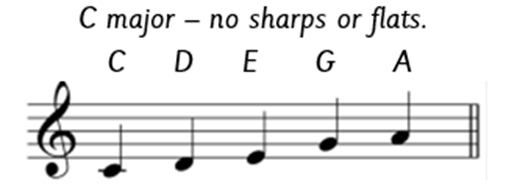
- 4/4 time signature, where there are two crotchet beats in a bar.
- how to read musical notation.
Life Skills
Our life skills sessions will focus on one of our Core Values; respect and how we treat others respectfully. We will also be discussing what makes a healthy friendship. This work will run alongside our S.E.A.L. work, which is all about getting on and falling out.
P.E.
Ms Hodges will be teaching dance (Thursdays) and Mrs McCaghrey will be teaching netball (Tuesdays). For all P.E. lessons, long hair must be tied back and earrings ideally removed or taped up. Watches must also be removed.
Dance
In dance, we will be exploring dynamics, rhythm, beat and movement as we create a spy dance. This will include techniques of cannon, mirroring and matching. Later in the term, we will be learning to samba. We will learn about the origins of this dance style and create our own samba dance, including a set step routine.
Box Step:
- Stand with feet about a hip width apart.
- Step feet to make a box-shaped pattern on the floor.
- right foot forward, in front of left foot.
- left foot crosses in front of right foot.
- right foot steps back behind left foot.
- left foot steps back to where it started.
- arms move in egg beater action throughout.
- try not to look at your feet.
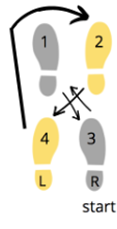
Samba Step:
- left foot forward (count 1)
- right foot steps next to left (and)
- left foot in place, weight shifts to it (count 2)
- right foot step
- backward (count 3)
- left foot next to right
- foot (and)
- right foot in place,
- weight shifts to it (count 4)
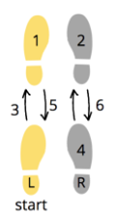
Netball
This lesson will be taught outdoors when the weather allows. Please make sure that your child has something warm to wear as well as their usual P.E. kit so that they will enjoy the lesson.
Netball is a ball sport played by two teams of seven players, usually on an indoor court. In netball there are different ways to pass the ball, such as a chest pass and a shoulder pass.
R.E.
In R.E. we will be considering the key question: What is the most important part of the Christmas story today? This will include a focus on the Nativity story, also known as the Christmas story or the Nativity of Jesus. This is a story that tells the conception and birth of Jesus Christ. Telling the story of Nativity is a Christmas tradition and is central to the celebration of Christmas within the Christian faith.

Science
Our science work this half-term is all about the classification of plants and animals. We will learn about different vertebrate and invertebrate animals and the necessary features of living organisms.
